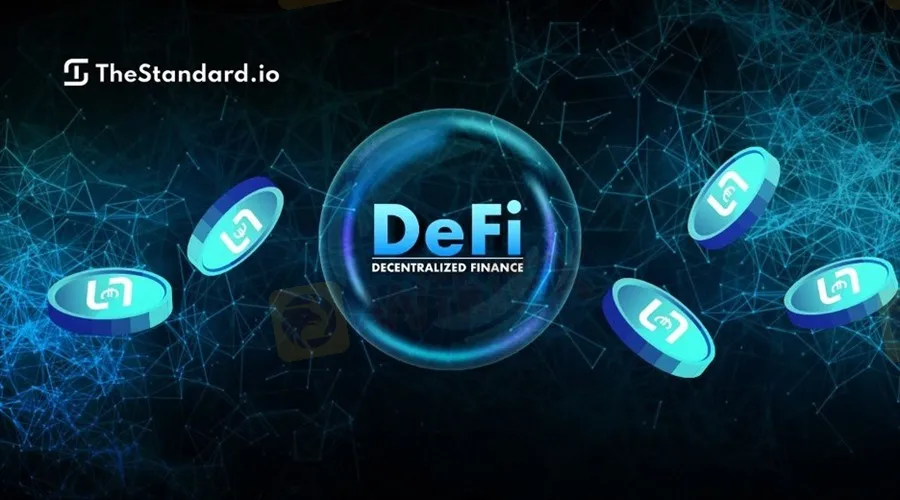简体中文
繁體中文
English
Pусский
日本語
ภาษาไทย
Tiếng Việt
Bahasa Indonesia
Español
हिन्दी
Filippiiniläinen
Français
Deutsch
Português
Türkçe
한국어
العربية
The Standard DAO is Pioneering Stablecoins as the Calls for Regulation Grow Louder
Abstract:What can innovators in the space do to avoid external regulation?

Regulated Stablecoins are Coming
The stablecoin space is a critical part of the cryptocurrency market‘s infrastructure. It underpins the overwhelming majority of fiat denominated trades in the space as well as a significant portion of the volume of the space’s largest decentralized finance (DeFi) protocols. Yet, given its critical nature, it has continued to suffer from a lack of transparency (think USDT) and careless speculation, the latter of which saw one of the biggest algorithmic stablecoins, TerraUSD, collapse in mere weeks.
It is not a surprise then that regulators have taken an interest in seeing what can be done to stabilize the ironically unstable space. For example, in response to a question on stablecoin regulation in May 2022, US Treasury Secretary, Janet Yellen, specifically mentioned USTs decoupling, calling for stablecoin legislation to be passed in the US by the end of 2022.
Since then, there have been proposals put forward including one which might require projects to create and maintain stablecoins, with conditions on how they function required to be met. This could completely eliminate algorithmic stablecoins from the market, and put significant pressure on centralized stablecoins. Whilst this specific example is US-based only, many other jurisdictions are looking to reign in the stablecoin space, and these voices will likely grow louder as demand for stablecoins increase.
Enter TheStandard.io
TheStandard.io proposes an over-collateralized model for crypto stability which incentivises its users to ‘lock-up’ digital assets in ‘Vaults’. These assets can then be used as collateral to acquire loans, at zero interest, by minting tokens pegged to specific fiat currencies such as the dollar or the euro. Borrowers using this framework will also be able to capitalize on inflation, as it will reduce their liability.
TheStandard.io will first launch the sEURO, a stablecoin pegged to the value of the Euro. Early participants will receive a 20% discount when purchasing sEURO as an incentive to launch and grow the stability pool . This special pool is also called the Protocol Controlled Value (PCV), which will be used as a reserve to always buy and sell the stablecoin at it‘s pegged price. Initially, these early participants will be able to ’lock-up EVM compatible tokens,ETH, PAX Gold, wrapped BTC and USDC and more.
Additionally, liquidity building for sEURO/USDC or another pegged stablecoin will begin, allowing users to deposit their newly minted sEURO and stablecoins into The Standard DAOs bonding contract which will be locked in a Uniswap liquidity pool. This will be the initial tool for stabilizing sEURO whilst ensuring those early participants are rewarded. Once stabilized, protocol will change to allow the minting of stablecoins pegged to other fiat currencies.
Sea steading Pioneer and Charter City Visionary Patri Friedman recently joined the TheStandard.io as an Advisor to the project.'
Read a more detailed version of how this process will work in this paper.
Stablecoin Demand Continues to Increase
A framework like that proposed by TheStandard.io might just be what the cryptocurrency space needs for several reasons. Firstly, demand for cryptocurrencies and, in turn, stablecoins, continues to soar, with the top stablecoin, Tether USD (USDT) more than tripling in market capitalization since 2020. This has put USDT in an overwhelmingly dominant position in the market, accounting for over 90% of all stablecoin volume on any given day.
There are concerns that USDT could now be a single point of failure, and combined with its historic lack of transparency, many in the crypto space are understandably worried about the effect a potential collapse could have on the space.
Moreover, the space has seen, with the collapse of TerraUSD taking $14 billion out of the market, the effect of the under tested algorithmic stablecoin market can have on confidence in the space. As this is one of the fastest growing areas of the stablecoin space, countering it with a framework that has a solid basis in economics, might inspire experimentation on more grounded technologies.

Disclaimer:
The views in this article only represent the author's personal views, and do not constitute investment advice on this platform. This platform does not guarantee the accuracy, completeness and timeliness of the information in the article, and will not be liable for any loss caused by the use of or reliance on the information in the article.
Read more

Italian Regulator Warns Against 5 Websites
The Italian regulator, CONSOB has issued a warning against five websites offering unauthorized financial services. This regulatory action aims to protect the public from fraudulent activities.

WikiEXPO Dubai 2024 is coming soon
3 Days Left!

Trader Exposes Unethical Practices by STP Trading
A recent allegation against STP Trading has cast doubt on the firm's business practices, highlighting the potential risks faced by retail traders in an increasingly crowded and competitive market.

What Makes Cross-Border Payments Easier Than Ever?
Cross-border payments are now faster, cheaper, and simpler! Explore fintech, blockchain, and smart solutions to overcome costs, delays, and global payment hurdles.
WikiFX Broker
Latest News
Hackers Charged for $11M Crypto Theft Using SIM-Swaps
Role of Central Banks in the FX Market
FCA Alerts Against Sydney FX
What Makes Cross-Border Payments Easier Than Ever?
Trader Exposes Unethical Practices by STP Trading
Bitcoin Nears $100,000: A Triumph of Optimism or a Warning Sign?
Malaysian Man Loses RM113,000 in Foreign Currency Investment Scam
Mastercard Partners with JPMorgan for B2B Cross-Border Payments
FCA Identifies Clone Firm Exploiting Admiral Markets' Credibility
Coinbase Under Scrutiny Amid Wrapped Bitcoin Delisting Controversy
Currency Calculator


